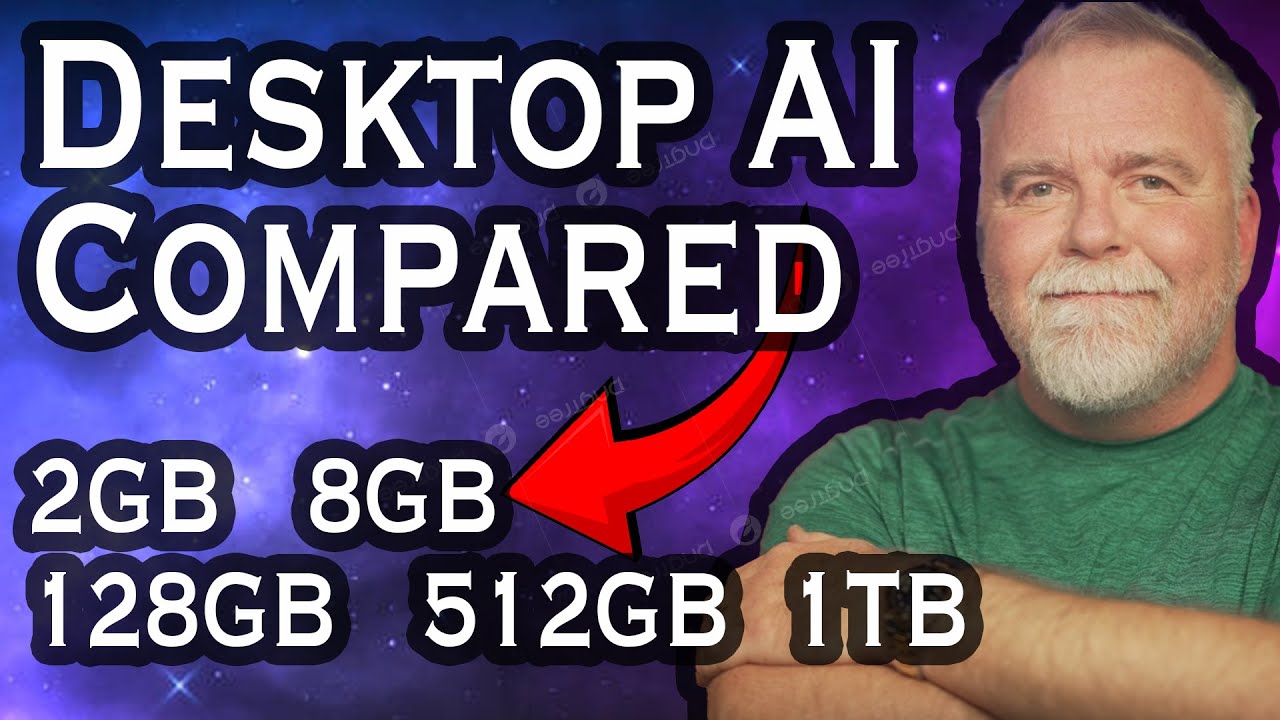The video demonstrates that running large AI models on desktop hardware is feasible and depends more on the specific models and tasks than on having massive amounts of RAM, with small devices handling simple tasks and high-end setups enabling larger models. It emphasizes that balanced hardware, tailored to the model’s requirements, can provide effective AI performance without the need for specialized or excessively expensive equipment.
In this video, Dave explores the capabilities of running large AI models directly on desktop hardware, emphasizing that the amount of RAM needed depends on the specific models and tasks rather than a fixed requirement. He begins by demonstrating how small devices like the Jetson Orin Nano with just 2 GB of RAM can handle simple AI tasks, such as running small models or performing license plate recognition, highlighting that fitting models into available memory is often the main challenge. He stresses that for many applications, affordable hardware can suffice if the models are appropriately scaled to the hardware’s capacity, challenging the myth that massive RAM is always necessary for AI work.
Moving up in hardware complexity, Dave tests an 8 GB GPU, the Tesla P40, with a larger model (Gemma 3 with 12 billion parameters). While the model fits into memory, performance is slow, producing only about two tokens per second, which is insufficient for real-time or live applications. This illustrates that simply having enough memory isn’t enough; processing power and speed are equally important. He then introduces a high-end workstation with dual RTX 608 GPUs, totaling 96 GB of GPU memory, which allows him to run even larger models like the Deepseek R170 billion parameter model, achieving much faster inference speeds around 20 tokens per second.
The video also covers running large models on different hardware architectures, including a 128 GB Mac with unified memory. Using a remote connection to a powerful Mac M4, Dave tests a 27 billion parameter Gemma 3 model, which performs well at over 23 tokens per second, demonstrating that high-performance models can be effectively run on high-memory consumer hardware. He emphasizes that the choice of hardware should be driven by the specific models and tasks, rather than assumptions about the need for enormous RAM or specialized GPUs, making AI more accessible to a broader audience.
Finally, Dave pushes the limits by attempting to run the massive Deepseek R1 model with 671 billion parameters, which requires over 400 GB of GPU memory. While he successfully loads the model on a system with 1 TB of RAM, performance remains slow at around 6 tokens per second, illustrating that even with enormous memory, the processing speed for such large models is a bottleneck. He concludes that truly live, real-time performance with the largest models would require specialized hardware like the upcoming DGX stations or high-end enterprise GPUs, but for many practical purposes, scaled-down models on consumer hardware can be quite effective.
Throughout the video, Dave emphasizes that hardware choices should be based on actual needs and model sizes rather than assumptions about what’s necessary. He demonstrates that smaller, more affordable hardware can handle many AI tasks effectively, and that understanding the specific requirements of your models is key to making smart investments. His exploration underscores that AI performance depends on a balance of memory, processing power, and task complexity, encouraging viewers to tailor their hardware setups accordingly for optimal results.
